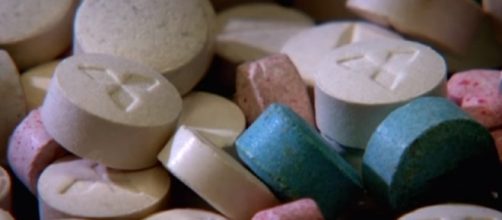Mdma (3,4-methylenedioxy-methamphetamine), which is commonly known as Ecstasy or Molly, has long been famous and notorious among party crowds like at all-night dance festivities or in nightclubs. But now, Ecstasy’s overall image in the market might change as the U.S. Food and Drug Administration (FDA) reportedly approved the substance as a “breakthrough” drug to treat patients with PTSD (Post-Traumatic Stress Disorder).
Despite being considered an “illegal drug with no recognized medicinal use” in 1985 by the U.S. Drug Enforcement Administration, MDMA was previously used as an aid in psychotherapy, particularly in the 70's mental disorder treatment called “talk therapy." Due to its promising value when administered under carefully controlled conditions, FDA set the drug for clinical trials, review and eventually its potential approval.
FDA Grants Breakthrough Therapy Designation for #MDMA-Assisted Psychotherapy for #PTSD https://t.co/d3Ex8VvTiA @US_FDA #Science #Psychedelic pic.twitter.com/0zZdwpA85i
— MAPS (@MAPS) August 27, 2017
PTSD epidemic
According to The Washington Post, there has been a rising PTSD epidemic among soldiers exposed to war-related traumas. But through the MDMA program established by a group of psychedelic researchers, the street drug could be a promising tool for treatments.
The stigma associated with psychedelics, however, attracted several ridicule and skepticisms. Hence, many government and military officials remain hesitant in embracing the illegal drug as part of the mainstream culture.
What is MDMA?
Popularly known as Ecstasy or Molly, this synthetic drug has similarities with hallucinogens and stimulants.
It alters an individual’s perception and mood and incites the feelings of pleasure, emotional warmth, and increased energy. Unfortunately, the drug can also distort time and sensory awareness, National Institute on Drug Abuse noted.
Moreover, it also increases the activity of three neurotransmitters or brain chemicals — dopamine, norepinephrine, and serotonin.
Dopamine is responsible for the euphoric feeling or increased energy.
Serotonin, on the other hand, effects or triggers sexual or emotional hormones, mood, sleep, appetite and other functions, while norepinephrine increases the blood pressure and heart rate. As per Popular Science, the combined effects of these three brain chemicals make the user feel euphoric and boost their physical sensations and sense of empathy.
Rewiring the memory
Since some researchers have taken interest for MDMA’s medicinal role in psychotherapy, particularly for PTSD and anxiety in terminally ill patients and social anxiety for autistic adults, the drug could also help treating patients suffering war-related traumas or PTSD like veterans and soldiers. In fact, the drug could give the users the opportunity to “rewire or revise” their memory by “making new connections” or strengthen those old and painful memories.
Due to the fact that patients high on ecstasy don’t feel the same pain when they recall a painful memory, those experiences become easier to deal with their therapists. The drug could also give relief to patients who were unresponsive to all other therapies at minimal risks.
Skepticisms
Despite the drug’s potential value in psychotherapy, some psychologists remain hesitant in using it as a therapy tool, saying it could be harmful to the brain's structure in the long run. Some even argued that MDMA is not clinically useful and deemed unnecessary.
Research results on whether the drug is addictive also vary, with some people report signs of addiction such as depression, trouble concentrating, fatigue and loss of appetite. For ecstasy addiction, there are no specific medical treatments available but behavioral therapy was found helpful.
Side effects
The drug's effects last about three to six hours and its health impacts include sweating, chills, blurred vision, involuntary teeth clenching, muscle cramping and nausea.
Other possible side effects are irritability, impulsiveness and aggression, depression, decreased interest in sex and pleasure, loss of appetite, memory and attention issues, anxiety and sleep problems. High doses of ecstasy, however, can affect the body’s ability to regulate temperature, which could result in heart, liver or kidney failure or death.


